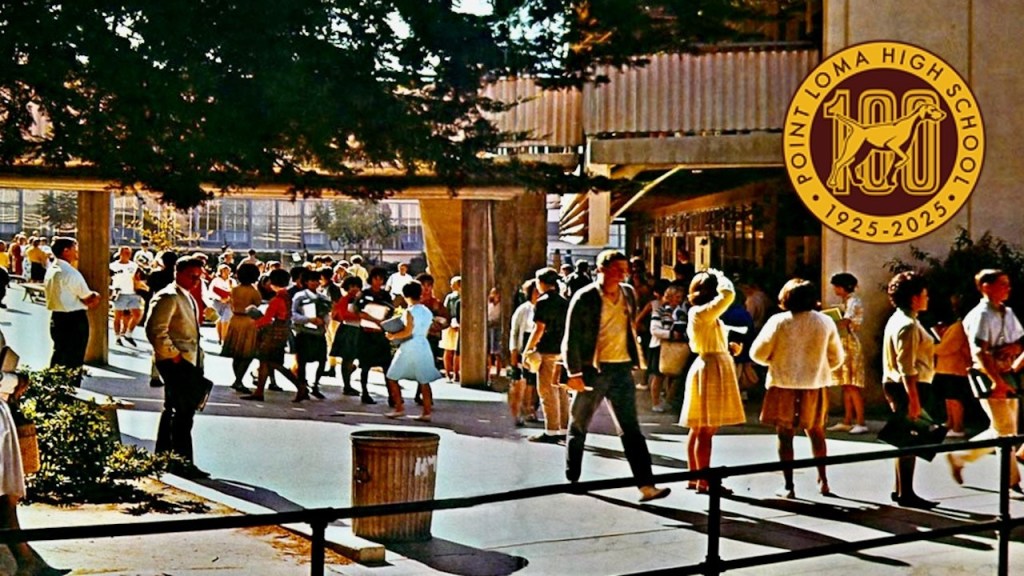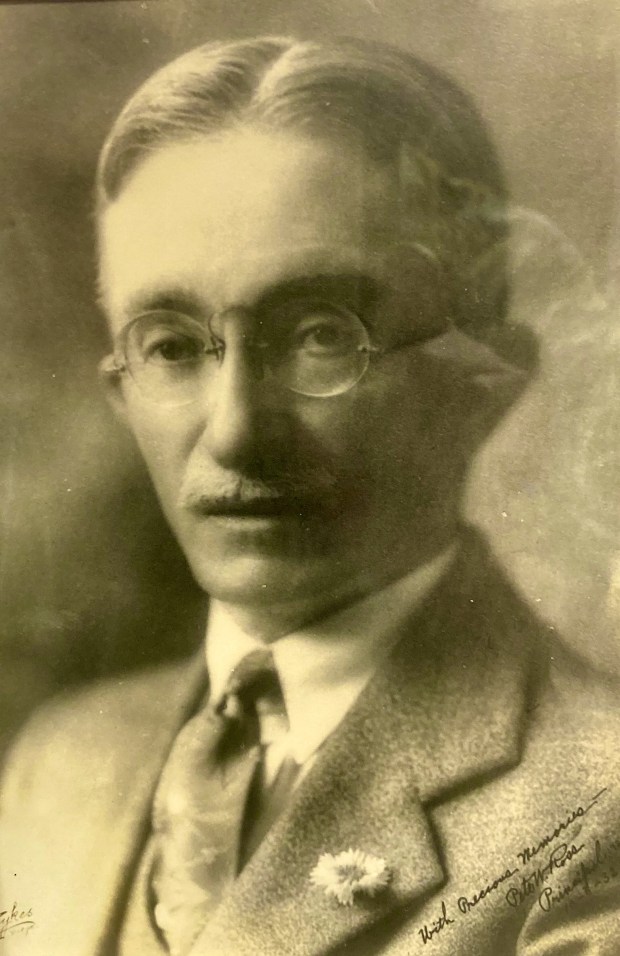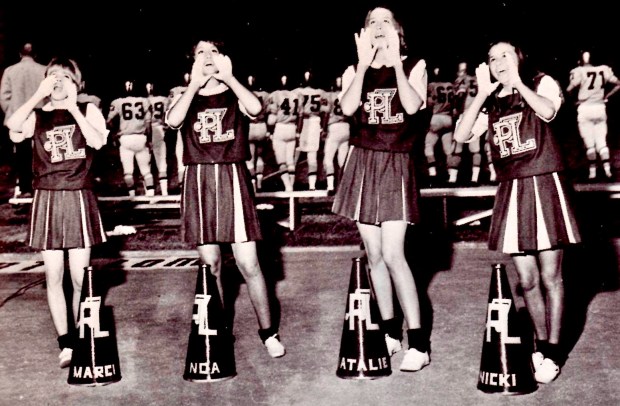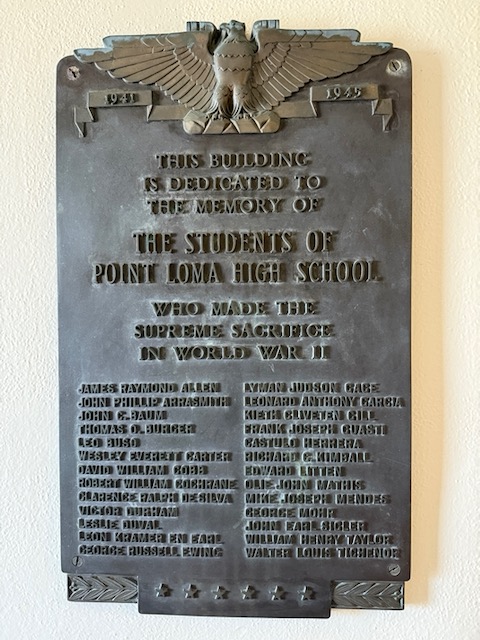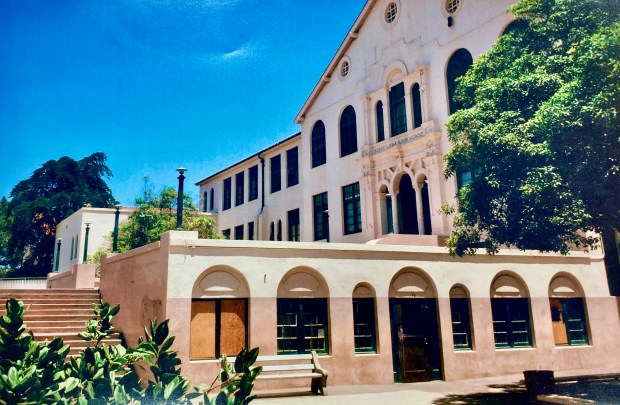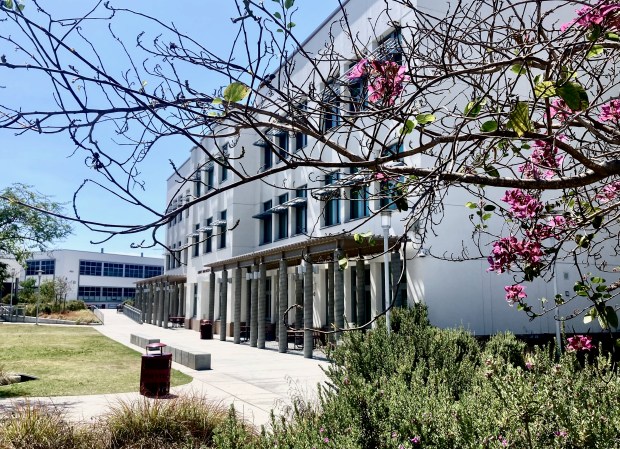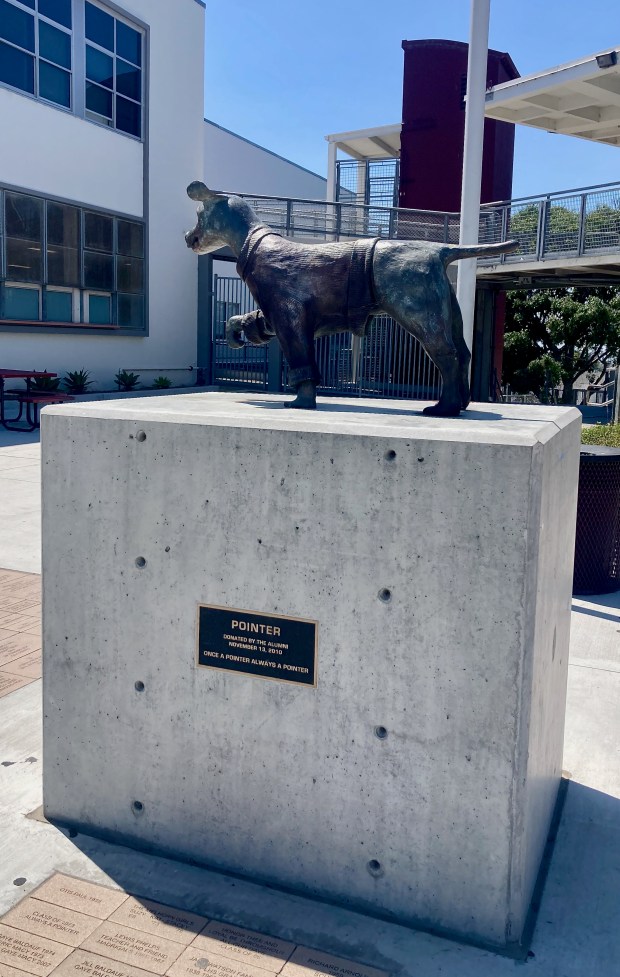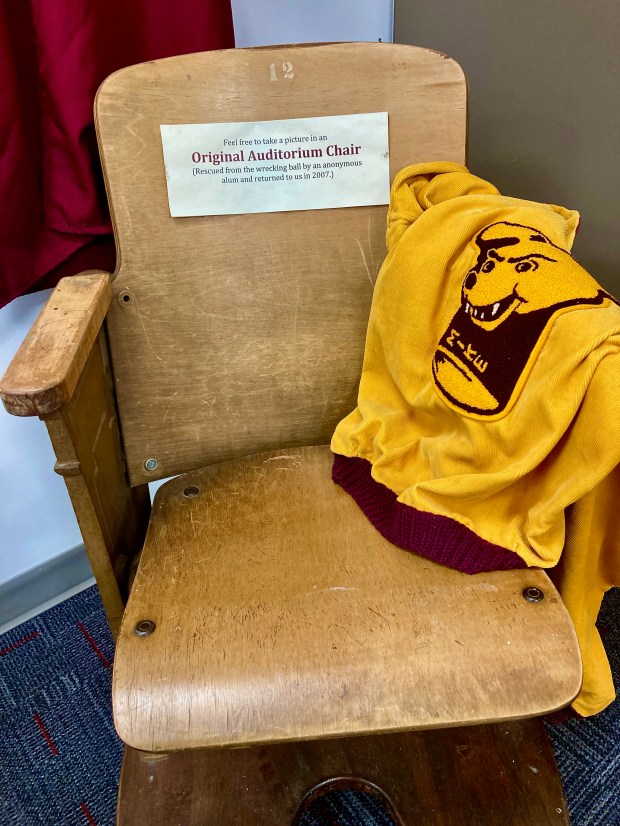Let’s set the way-back machine for 19 and 25, a solid century ago. The period between the two world wars was an exciting and turbulent time.
High school teacher John T. Scopes, accused of teaching the theory of evolution — in violation of the Butler Act — went on trial, rather sensationally, in Dayton, Tenn. The case pitted fundamentalists against so-called modernists. Many folks didn’t know what to believe.
Was our solar system actually a microscopically small speck out on the edge of something huge called a galaxy? The idea sounded like science fiction. Enter American astronomer Edwin Hubble, who in 1925 asked folks to believe that tiny telescopic smudges that had been considered clouds of cosmic dust that almost no one had ever seen were, in reality, very distant additional galaxies. It seemed a little much. Our universe was expanding.
Locally, the new Naval Training Station (later renamed the Naval Training Center) was taking shape down on the bay side of Rosecrans Street. John D. Spreckels’ Mission Beach Amusement Center, featuring the indoor Natatorium and Mission Beach Ballroom, famously opened in 1925.
You may have read in these pages that the new and beautiful Strand Theatre in Ocean Beach also opened in 1925. Guess what the most popular film was that year. Give yourself credit if you guessed “The Phantom of the Opera” with Lon Chaney, a silent film. Talking pictures were still a couple of years down the road.
This was right in the middle of Prohibition, by the way. Margaret Thatcher, Johnny Carson and B.B. King were born in 1925, and out on a Point Loma ridgetop, they finally opened a “junior” high school.
Show Caption
1 of 9
The main building at Point Loma Junior-Senior High School in 1925. (San Diego History Center)
Expand
‘Vote for the school bonds’
The prior year had seen a coordinated community campaign for a school bond measure to fund such a school.
Ocean Beach Elementary School fifth-grader Inez Ulbrand had described the situation very clearly in The Beach News:
“Ocean Beach is very much in need of a high school. The school in Ocean Beach is becoming crowded. If more children keep coming, there will not be room for them all. The seventh and eighth grades will have to go over to San Diego to a junior high school. If everyone will vote for the bonds, we can build the high school. We should vote for the bonds because:
• It will save time for the boys and girls.
• It will relieve congestion in the elementary school.
• It will save money for the parents.
• It will save the health of the pupils.
• It will improve the school work.
• It will make Ocean Beach grow.”
A group of sixth-grade pupils also weighed in with a class composition:
“Vote for the school bonds. It is an opportunity for your children’s further education. If these bonds carry, it means a new junior high school for Ocean Beach.
“This will help the children by saving their time and health. An hour and 30 minutes are wasted each day going to and from school. Not only will a new junior high school save time, but it will also give the weaker pupils a better opportunity for an education. The long streetcar ride has made many children too ill to attend school.
“This would also mean a great saving in money for transportation as well as helping the moral influence. Your children will be safer in Ocean Beach than in the crowded streets of San Diego.
“A junior high school will mean an increase in the value of property in your city because a buyer of property first asks about the schools. If you have a good school, many people will buy property in Ocean Beach, and this will cause a great increase in the population.
“Vote for the school bonds.”
An increase in the population was considered a good thing a century ago. A rising tide, of course, floated all boats, and the closest secondary schools were Roosevelt Junior High and Russ (San Diego) High School.
The 10-acre site owned by the school district “at Loma Portal, on Chatsworth Boulevard near Voltaire Street,” was criticized by detractors as not being near anything. But it was considered central to accommodate students from Point Loma (Roseville), Loma Portal, Ocean Beach and Fremont (Old Town). OB Elementary School Principal Kate Spani told The Beach News that 375 students in grades 7-12 lived in those areas at the time.
The school district loved the site and considered it supremely scenic. According to the San Diego Union and Daily Bee, city schools Superintendent Henry C. Johnson considered the Chatsworth Boulevard site the finest location for a school of any he had seen in the United States, “and he has made a particular effort to visit the schools of every state in the Union. On account of its location, visible for miles around, the new school is expected to be one of the showplaces of the county.”
The school bond issue did pass and the school district allocated $200,000 for the construction of the new modern high school.
Point Loma architect Edwin T. Banning designed a three-story structure in what was described as the Spanish-Moorish style “with open patios, courts and of architectural design considered best suited to this part of the country and climate.”
What had been planned as a high bell tower to the south end of the main building never materialized.
Parts of the site were already being leveled for athletic fields and playgrounds by the early summer of 1924. The structure was intended to accommodate 900 students, with initial enrollment expected to be in the 500 range and an early faculty of 25.
As reported in the Union and Daily Bee, the school was “primarily for the accommodation of the students of all Point Loma, the beaches and the intermediate territory, as population is increasing so rapidly in that district as to make provision for schools necessary. Students from Old Town and streets on the west of San Diego near the bayfront up as far as Laurel Street (Little Italy) also will be accommodated at the new high school.”
Purple and gold
With what became known as the main building completed, Point Loma High School opened for business in September 1925. That old building stood solidly on that hill for almost 50 years and would have survived another 50 if the 1974 efforts to raze it are any indication.
A month later, the Point Loma student body selected the school colors. As recorded in The Beach News, “With the selection of purple and gold as the colors for the Point Loma High School, the students are giving enthusiastic consideration to the peppiest yells and the best original songs, special prizes for which have been offered by Principal Ross and the vice principals, Mr. Swenson and Miss Williams.”
When the purple may have morphed into maroon (which is always a funnier word) may be a story for another time, or not.
In November ’25, first Principal Pete Ross (Ross Field, Ross Elementary) wrote a letter to Beach News editor Kirk Smith that was printed on the front page of the paper. The principal thanked Mr. Smith for the splendid coverage the school was receiving and enclosed his dollar bill for a year’s subscription.
Ross did, however, want to call the editor’s attention “to the fact that we are a junior-senior high school. We are not going to use that title all the time, but I’d like you to have it in mind so you won’t refer to us as just the ‘junior high school.’ … The fact that we are a six-year high school is really a great asset to our patrons in many ways.”
The school remained grades 7-12 until Richard Henry Dana Junior High opened in 1949.
The beautiful old auditorium that opened in 1930 also was razed in the ’70s.
The Men’s Gymnasium opened in 1950 and was dedicated to 26 Pointers who made the supreme sacrifice in World War II.
There is a handsome commemorative plaque listing those brave kids that until recently had been on the wall of an out-of-the-way corridor used mainly for storage. I was happy to see that the plaque has been relocated to a wall where everybody walking into the gym will see it.
This is not intended to be an all-encompassing retrospective, but Point Loma has produced more distinguished graduates than you can shake your pom-poms at.
Where the girls are
“We’ve got spirit, we’ve got class, we’ve got girls who shake their pom-poms!” You remember that one, dontcha?
I won’t say I was a particularly adept student during my years at Point Loma High, as we do strive for accuracy here. I tried though … sort of. But I did graduate with my class and mostly enjoyed high school.
I will let you in on a little secret: There were girls there. Yeah, seriously. Hundreds of them. Every day.
As primarily an observer, I found the phenomenon to be remarkable. That little factoid was certainly not lost on Jim Kress, Larry Perez and myself, who found ourselves as the only boys in Miss White’s typing class one semester, right after lunch. Hey, typing is a valuable skill.
Could it be that what was once known as the “dress code” had gone completely out the window by the early ’70s? Possibly. I clearly remember one kid wearing bowling shoes with no socks, and I, for another, wore flip-flops regularly. I don’t think I was getting away with anything either, so it must have been “OK.”
But a seismic rent in the social and cultural fabric of our teenage lives occurred when girls were suddenly allowed to wear long pants to school. Those of us who had stood together in solidarity with our sisters in their quest for the right to wear shorter and shorter skirts were naturally appalled. What a cruel betrayal.
Exactly when that absurd protocol went into effect seems to be a matter of some controversy on a few online forums. But if we say the fall of 1971, give or take six months, we will be right in the main patio on the “senior lawn.”
Wagging the dogs
The PLHS Pointer Association is celebrating the school’s centennial this year beginning with a gala celebration Saturday, Sept. 13. See info here: plhscentennial.com/gala.
Former Pointer sports editor and prolific scribe and publicist John Freeman (class of ’69) has taken on the huge project of editing a substantial PLHS memory book titled “A Century of Pointer Memories.” Alumni of all years were petitioned to submit stories and anecdotes from their years at PL.
John told me he was looking for humor and reflection. The project “has been a labor of love,” he said. “A lot of labor, but also a lot of love.”
He considers the editing process to be “memorializing the memories.”
Suzy’s Zoo creator Suzy Spafford (class of ’63) recalled that just a little encouragement from a PLHS art teacher helped her follow her dreams. Author A. Lee Brown (PLHS ’59) tells the story of QUIIGS famous sporting club.
One hundred of the 250-page books will be sold at the gala for the bargain price of $20, and they will soon be available online for $25.
Longtime alumni director Kim Jessop Moore (PLHS ’73) has a couple of mystery stories of her own. A time capsule buried in the quad in the fall of 1977 could never be found again. And was the statue of the Pointer dog installed backward? She thinks so. Sculptor Richard Arnold (PLHS ’59) thinks so, too. Or is the pooch facing a future school entrance? Perspiring minds want to know.
John is convinced the class of 1969 was the best class ever, and Kim seems inclined to agree with him. They’ve worked so hard, it behooves the rest of us to let them think so.
Eric DuVall (PLHS class of ’72) — who maintains that the El Portal yearbook cover from 1972 is so far superior to all the others that there is not even a close second — is president of the Ocean Beach Historical Society. Membership in OBHS, a 501(c)(3) nonprofit, is $25 annually. Visit obhistory.org.
